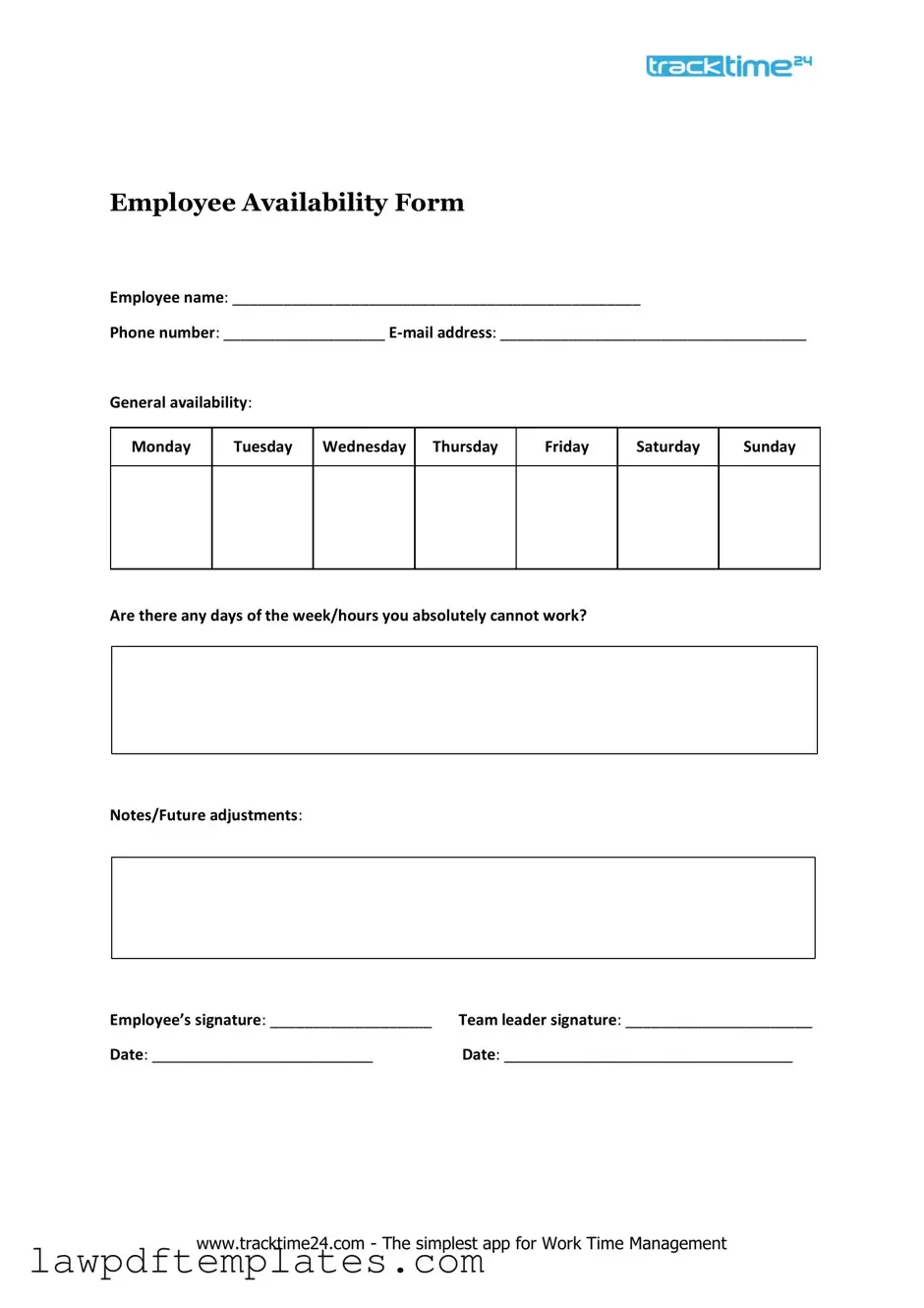Filling out an Employee Availability form can seem straightforward, but many people make common mistakes that can lead to confusion and scheduling issues. One frequent error is not providing complete information. When employees leave out details such as specific days or hours they are available, it can create gaps in scheduling. Employers rely on this information to ensure adequate coverage, so it’s essential to be thorough.
Another mistake is failing to update the form when circumstances change. Life events, such as a new job or changes in personal commitments, can affect availability. If employees neglect to inform their employer of these changes, it can lead to misunderstandings and potential conflicts in scheduling.
Some individuals also overlook the importance of clarity in their responses. Using vague terms like “flexible” or “sometimes” can confuse managers who need precise information. Instead, providing specific times and days helps employers understand exactly when an employee is available.
Additionally, not considering peak hours or busy seasons can be a significant oversight. Employees should think about the times when their workplace is busiest and indicate their willingness to work during those periods. This consideration shows a commitment to the team and can enhance job security.
Another common error is not checking for typos or inaccuracies. Simple mistakes in writing can lead to misunderstandings about availability. Double-checking the form before submitting it can prevent these issues and ensure that the information is accurate.
Some employees may also forget to communicate any restrictions they have. For instance, if someone cannot work certain shifts due to personal commitments, this should be clearly stated. Transparency about limitations helps employers create fair schedules that accommodate everyone’s needs.
Finally, neglecting to sign or date the form can render it incomplete. A signature often signifies that the employee agrees with the information provided. Without it, the form may not be considered valid, leading to further complications in scheduling.

